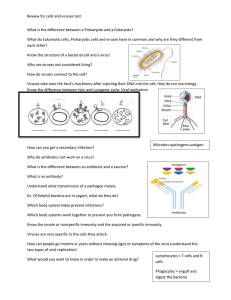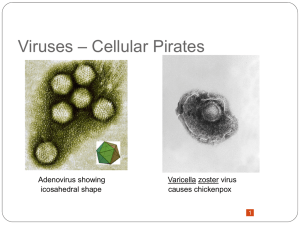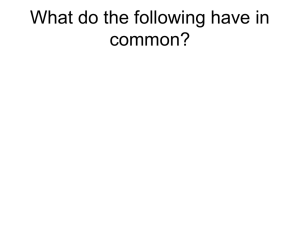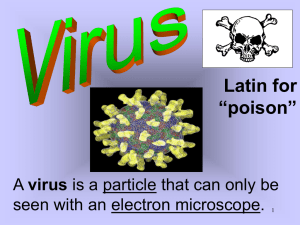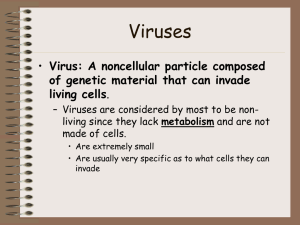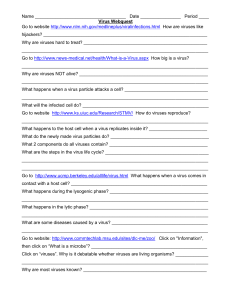Virus Notes (Chapter 19 Section 3) VIRUSES Virus Structures
advertisement
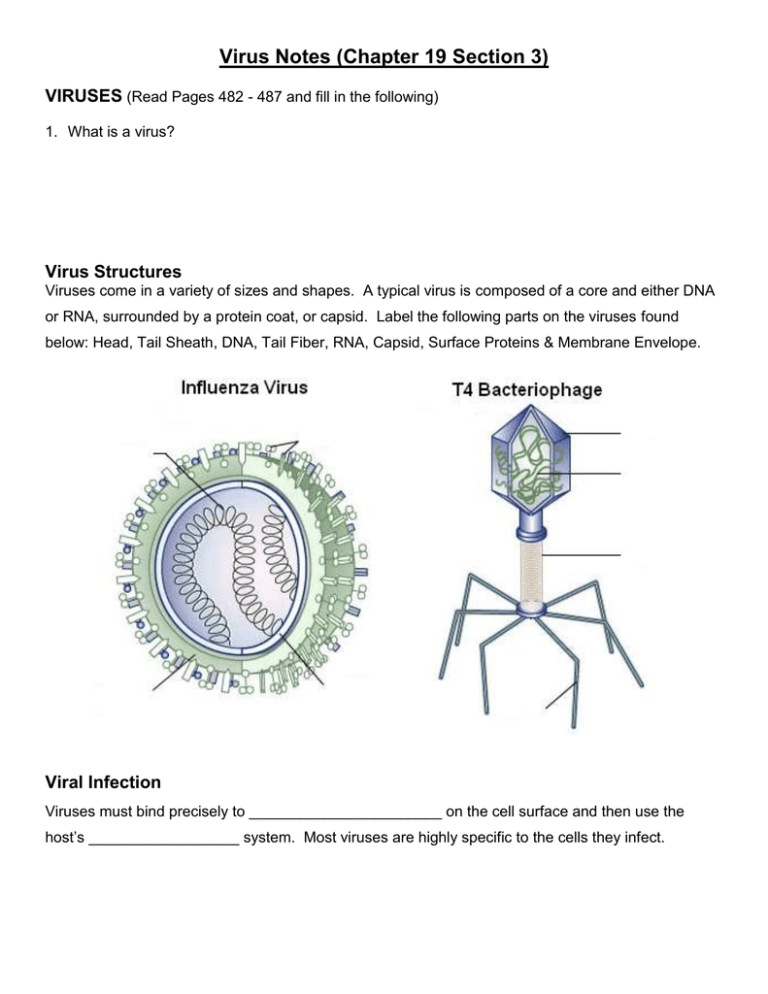
Virus Notes (Chapter 19 Section 3) VIRUSES (Read Pages 482 - 487 and fill in the following) 1. What is a virus? Virus Structures Viruses come in a variety of sizes and shapes. A typical virus is composed of a core and either DNA or RNA, surrounded by a protein coat, or capsid. Label the following parts on the viruses found below: Head, Tail Sheath, DNA, Tail Fiber, RNA, Capsid, Surface Proteins & Membrane Envelope. Viral Infection Viruses must bind precisely to _______________________ on the cell surface and then use the host’s __________________ system. Most viruses are highly specific to the cells they infect. The following are the two different ways in which a virus can cause infection: Lytic Cycle Lysogenic Cycle 1. Briefly explain what happens during the lytic cycle. 2. Explain how the lysogenic cycle differs from the lytic cycle. 3. What is a prophage, and during which type of viral replication is it formed? 4. What is a host? 5. Explain how the lytic and lysogenic cycles are linked. Viruses and Disease Briefly explain the following based off what you read on pages 486 and 487 of your textbook. Viruses and Cancer - Retroviruses - Prions -

